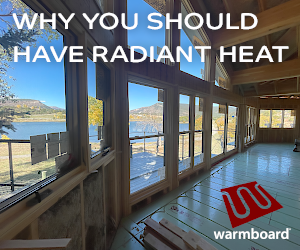Housing represents a critical investment for families and economies—the National Association of Home Builders reports that as of the first quarter of 2019, housing contributed $2.78 trillion to gross domestic product, a sizeable, valuable and continually growing segment of the economy. Across the world, LEED-certified homes have grown 19% since 2017, and are at all-time high with nearly 500,000 certified single-family, multifamily and affordable housing units, more than 400,000 of which are located in the U.S.
In August 2019, the U.S. Green Building Council (USGBC), creators of the LEED green building rating system, released a report showing that LEED certification in the residential market is on the rise. Significantly, the report outlines the top 10 U.S. states for LEED-certified homes, and Colorado has the fifth most in the country, with 8,091 certified units. This amounts to more than 9.87 million square feet of LEED-certified living space for Coloradans.
RELATED: Colorado Recognized as a Leader in LEED
Colorado is already a proven leader in the sustainable design and construction of commercial buildings, ranking sixth in the nation in the 2018 Top 10 States for LEED, a list on which the state has been included since its inception in 2011. Now, the state is also emerging as a leader in green homes, with more than 6,500 LEED-certified residential units across the state.
Only 13% of those units are considered affordable, opening up a new avenue of opportunity for the growing housing market in the state. For the 21% of Colorado’s residents who are living on extremely low incomes, the affordable housing market offers an opportunity to live sustainable lives without having to sacrifice health.
LEED homes use 20% to 30% less energy on average, and are required to demonstrate a minimum 15% savings over energy code and 20% water savings, lowering bills and allowing families to save money. They can be built for the same cost—and sometimes less—as non-LEED-certified homes, have a higher resale value and can sell faster than conventional homes. They also require less maintenance, and improve energy and water efficiency, which can lower utility bills for owners.
LEED is one of the few green building rating systems that has requirements specifically for homes. The residential LEED rating systems address the needs of single-family, multifamily and affordable housing projects, and help builders and remodelers create efficient and sustainable homes that residents can feel confident are also supporting their health and comfort.
Looking ahead, construction of green multifamily and single-family homes will continue to grow through 2022, and LEED plays an important role in verifying that progress and activity. As LEED continues to evolve, and the demand for healthy, affordable homes grows, Colorado’s green building community has the opportunity to make a significant and positive economic, environmental and social impact on Colorado residents.








